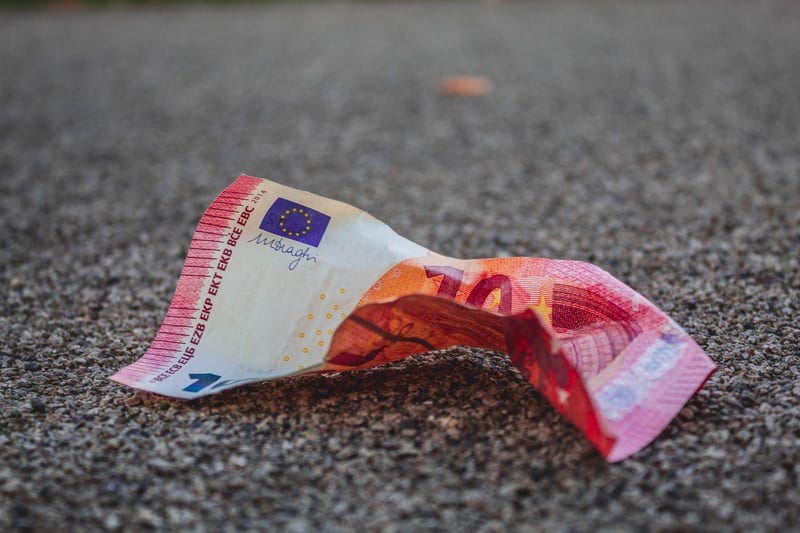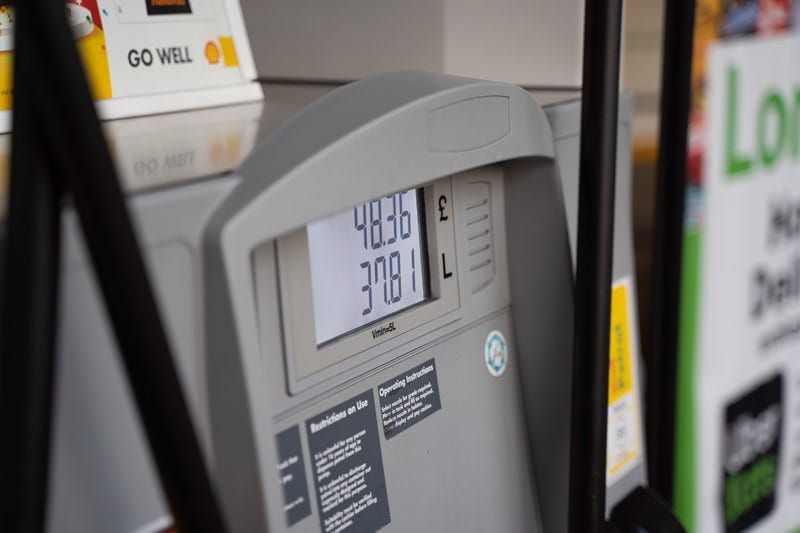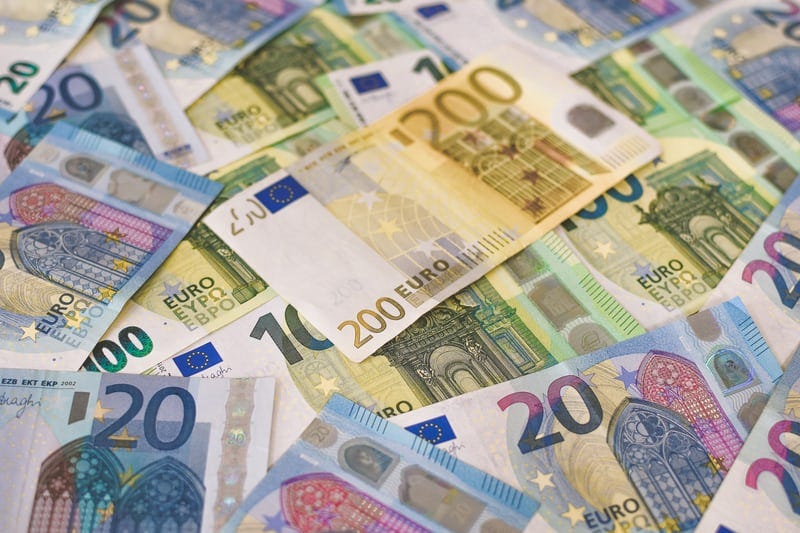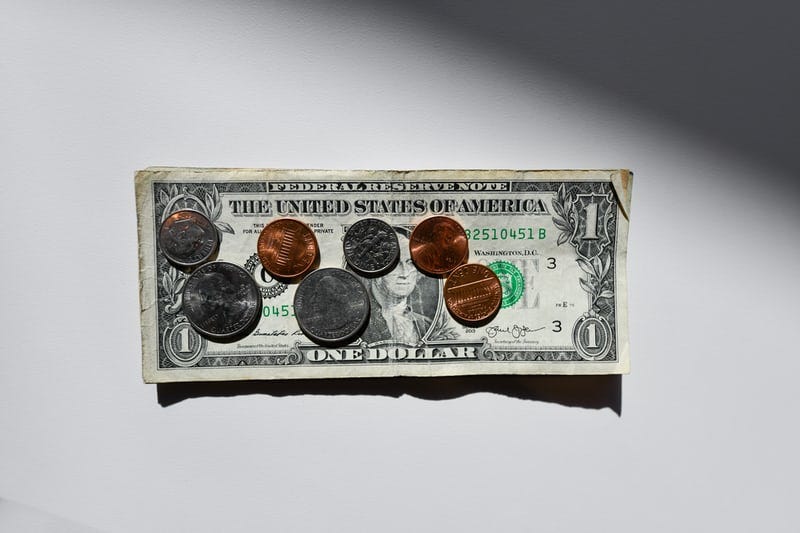Since more than half of U.S. adults are fully vaccinated by now, inflation is all on our minds.
We are abruptly venturing out and frivolously spending on luxuries and adventures that were shut down this past year. The world of travel, tourism and leisure is inching towards pre-pandemic levels as the unofficial start to summer kicks off this weekend.
As much as you want to feel free again and make memories, whenever spending, no matter if it’s on a sandwich or Gucci, you need to be prepared for it. If not, you won’t solidify the basic concepts of money management and be able to accurately estimate what you can and can’t afford.
As we’ve all been stuck at home for the past year hoarding our savings and diligently spending, I fear that all of the hard work millions of us have followed will vanish in a matter of weeks if we foolishly decide to plan 6 vacations in the coming months. This will put a serious damper on our financial future by digging us into a deep hole of consumer debt.
You’re not alone. We’re all craving to get away yet that means you need to be even more prepared than ever to know what you are hoping to experience. Don’t make spending too much of a therapy.
Investment
I’m going to take a wild guess and assume the first two things people want to do when they’re full vaxxed is either go:
-On vacation
-To an event or party
You’re in luck because both of these outings are one of the best investments you can provide you and your loved ones. We all deserve a break and according to scientific research, to think, perform, make new connections, better decisions and overall feel like a different and more alive human, taking a break and having fun is mandatory. Sadly more than half of U.S. employees, DON’T take advantage of their PTO and vacation days. Shame on you but I get it. It’s tough for me to take a 30 minute break.
Memories are priceless and valuable. You cannot replace nor buy them back but what they usually do come with are a price tag.
There’s no doubt after a year of burning cash and barely surviving, resorts to airlines will gauge prices to make up for lost profit over the past year and a half. Stimulus didn’t do justice and companies are ready to incentivize anything for people to get back to normal life.

Inflation Who?
Inflation means prices of goods and services are rising. Our purchasing power declines when there’s inflation because everything is more expensive. It requires more dollars to purchase something than it did before.
This sounds harmful yet it’s actually a healthy indicator the economy is growing and recovering from the deadly pandemic and recession we witnessed in 2020.
Inflation devalues currency and the new $3m is the new $1m.
Winners in a rising interest rate environment:
-Cash-rich companies with no debt and plenty of cash (too much cash not great just have enough for emergencies)
-Tech and Health Care-Growth companies aren’t high-yielding companies instead they use their retained earnings for more growth
-Brokerages + Banks-earn interest income on un-invested cash in customer accounts to make money to earn higher rates
-Banks + Insurers- practically always do well as long as people have cash to invest and save
-Savers and Retiree-higher interest and dividend incomes
Retirees can withdraw at a higher rate
Losers:
-Individual debtors-creaping interest rates mean harder time to pay off debt
-Leveraged firms-debt servicing goes up b/c risk of default goes up and capital intensive firms will likely underperform
-Exporters- As the USD increases, that hurts exporters. Foreigners need to buy more US dollars to buy US property, stocks and anything
When demand is rising, prices also rise leading to supply chain shortages especially for commodities which are first to get hit by inflation.
Commodities are goods used as inputs in production to produce additional goods or services. These include staple food items from corn to beef, oil, corn, gold and any type of raw material.
At the beginning of May, the CPI index (Consumer Price Index) that tracks the production of goods and services purchased by consumers (buyers) in the U.S. unexpectedly rose 8%. This is much more than economists predicted. This was an unexpected buying spree for the month of April which raises concerns for suppliers with having to keep up with demand.
When there’s too much demand not enough supply, wholesalers such as Costco to grocery chains need to increase prices on goods to keep up demand similarly to the housing bubble with low inventory, sky high demand.
Although policy makers such as Secretary of Treasury Janet Yellen and Fed Chariman, Jerome Powell who make monetary policy decisions with the central bank based on inflationary fears and interest rates, believe the economy looks dovish (still need assistance) at the moment. They don’t plan on tightening credit anytime soon which would lead to a selling of bonds and reduced borrowing in the economy for investors to cap inflation. They believe this inflation hike is temporary and they will keep their loose monetary policies for now. Major interest rate hikes are planned to be enacted in 2023 stated by Powell a few months ago.
So what does this mean for you?
At the moment with a low interest rate environment still in affect, herd immunity on the horizon and pent up savings from the pandemic that is bound to be spent, expect higher prices for household durable and staple goods.
As the East coast is still dealing with the aftermath of the shutdown of the Colonial Pipeline Gas ransom ware attack from early May that messed up supply chains for gas and oil production, gas is at its all-time high and expected to rise as people get back to normal life traveling again.

How To Prepare
We all have to live and enjoy the fruits of life. This means spending has to go on.
Yet inflation couldn’t come at a worse time when everything is finally getting back to normal, restrictions are lifting and consumers are spending like cray cray.
Advantages of Inflation:
-Economic growth
-Stable wages
-Adjustment of prices
-Recover from recession and deflation
-Value of savings increases-higher yield
Disadvantages:
-Currency depreciate costs more
-Less borrowing stimulus
-High interest on savings but also cash devalues faster
-Uncertainty and lower investment as stocks sell off
-Leads to slower growth
-International competitiveness & possibly trade/tariffs wars on purchasing power
In order to curb inflation and not let it spiral out of control, the Fed tightens credit through the FFR (Federal Funds Rate) which is the interest rate at which banks loan excess reserves to each other based off of the 10 year Treasury Yield (based on the 10 year bond yield in the markets to determine how people are borrowing). Increasing interest rates makes bonds more favorable, curbs less borrowing and increases investment and employment production opportunities to increase demand. The Fed increases yields by selling relatively meager amounts of Treasury debt at prices below the market price.

Top Inflation Hedges For Your Portfolio
Below I’ve outlined 5 approaches that are historically the best inflation hedges to get your money’s worth.
As a refresh, when interest rates rise, yields rise (the return for a bond). The price for a bond is the inverse of the yield. When the bond’s price rises the yield lowers.
Currently the Fed is monitoring the economy closely and will be doing so for a few more months to identify substantial growth in the economy through indicators such as low unemployment and reduced jobless claims and more spending through CPI and PPI (Price Production Index). These indicators will lead the Fed to make an informed decision if tightening credit is appropriate or not.
During high interest rate environments, investing in bonds versus stocks are your best bet. Tech in particular sells off when inflation fears arise because they take advantage of low borrowing costs and have less present cash flow as they rely on future earnings growth which inflation would damper. Bonds and stocks are competing against the dividend yield when interest rates rise. Throughout challenging economic recessionary times, taking out a mortgage, borrowing money for a loan on your car or paying back student loans are easier since the interest doesn’t accrue as high.
Yet any debt is still debt and needs to be evaporated especially on your credit card which charges 15–20% interest.
In terms of bonds, you want the highest yield possible and that happens when interest rates are higher. There is an inverted yield curve (high to low interest rate and yield) when the economy is doing well as opposed to an accelerated yield curve (low to high) interest and yield when the economy needs help.

Inflationary Hedges
#1 Gold
Gold is the oldest form of currency and source of stored value. Ironically precious metals such as gold don’t do well during economic times yet historically it has performed well when inflation is high, holding on to its value even in counties where inflation soared into double-digits.
It’s important to remember that gold tends to do less well than stocks during good times because similar to BitCoin, it has no real internal rate of return (IRR) and its value is determined by what investors believe in it today and its hopes for the future.
#2 Commodities
This is a classic inflation hedge because commodity prices, as discussed earlier rise the most when inflation hits since warehouses and supply chains need to catch up with demand ASAP.
Copper and oil are up more than 30% this year and lumber has doubled due to toilet, paper roll shortages and the construction of homes which all use tree bark (lumber).
#3 Value Driven Stocks
Stocks with low pricing power that are undervalued with low P/Es but realistically should have moderately priced ones do excellently. Tech tends to sell off. Firms with defensible goods such as tobacco to food and pharmaceuticals do well regardless and should always be in your portfolio.
Cyclical companies are sensitive to inflation and how the economy is performing but having a negative correlation mixed with a positive correlation stock is a good diversifying tactic.
Cyclical companies range from the sectors that got beaten down in 2020 from airlines to hospitality. Yet with vaccinations on the rise, they are anticipating pre-pandemic demand in the next coming weeks to come back to full-bloom. Cyclicals include automobiles, airlines, hotels, hospitality, tourism, leisure and the travel sector. Lastly, growth stocks such as tech, EV and or science grow faster than the economy and could be extremely volatile. They are the opposite of high-yielding.
As with everything, never put all your eggs in 1 basket and diversify! Risk whatever you’re willing to loose. Tech had an incredible year with remote work and stay at home orders put into place. The only way we could survive was online but as we head back to normal life, no doubt technology will still be a part of our lives but when it comes to our portfolio, we have to realize that stocks prefer lower interest rates and bonds are more preferable even if they’re more conservative.
When inflation hits there’s no point in paying a premium for pricing power stocks, so cheap value stocks such as telecommunications or cable TV become more attractive.
#4 TIPS (Treasury Inflation Protected Securities)
TIPS are one of the best sources of inflation protection bonds/securities as their coupons (interest rate) and repayments at maturity are directly correlated to consumer prices. In order to get the most bang for your buck, inflation needs to rise by at least by 1% to maintain purchasing power. When it ticks up, TIPS prices rise as well since more people buy them.
#5 Assets with Shorter Duration or Bonds with Shorter Maturities
Assets which rely on long-term inflationary fears will be hit the hardest. For example the 30-year Treasury yield is up from over 1% last year to now 2.3% today. That small rise in a year concealed a loss of more than 20% in price because of long duration.
Similarly with growth stocks, they focus on larger profits in the far future which are less attractive in an inflationary environment.
When it comes to your mortgage, you want to refinance as soon as possible before yields and rates rise. You want to snag the cheapest mortgage possible which at the moment is around 2.5–2/8%.
Longer term assets are hit by inflation and the fears arising about inflation which make them less attractive in themselves.

Inflate
There’s no right or wrong way to go about dealing with inflation. We still have to spend on every day items and deal with the uncertainty of wage growth. Luckily if your portfolio has an appropriate risk tolerance and inflation hedges inside like these, you are best prepared for the rocky road ahead.
And let’s not forget one of my favorite inflation hedges…
Real estate!
Not only it’s a tangible physical asset, it’s considered an alternative investment alongside collectibles, artwork, NFTs, lumber, etc. which have all outperformed and done extremely well this past year due to BitCoin’s dramatic rise.
Real estate has beaten out stocks this year with less inflationary and volatility fear. But remember, a house isn’t an asset in itself. You have to hold a property for at least 5 years to generate some return otherwise it’s just not worth it and instead better to rent luxury. The best part about real estate is that with less risk you get more reward and it provides stable passive scalable income you have control of negotiating.
If dealing with tenants and buying physical property is a pain, I suggest going into crowdfunding or REITS through the market to still earn your fair share of real estate. Only REITS would sell off during high yielding periods so I would stay away from those.
When it comes to investing, never fight the Fed because you will loose. Guaranteed. The Fed doesn’t surprise us investors. They tell us what’s on their mind and what they are looking out for. They are powerful and want the best for our economy to recover swiftly. The Fed’s next change in approach will address inflation although Yellen sees this as a temporary dilemma in the markets due to post-pandemic supply constraints.
I hope you look more into depth at these recommendations to protect yourself and wallet and remember, adjusting your portfolio is necessary once in a while.
The Fed is on our side. It doesn’t want to hold onto $5 trillion of U.S. government debt (Treasury securities) that it’s been buying since March 2020 and finally relieve quantitative easing.
In the meantime, buy what you need, not what you want and realign your holdings.
You’re in good hands.

